
I reported aboard MCB-7 at Davisville, R.I. in Jan. of 1966 as an EA-3 after four years in the Reserves. In February, the entire battalion of 850 men went to Camp Lejeune, N.C. for 3 weeks of Marine advanced infantry warfare school. As part of the training, we had to qualify on the rifle range.
Unknown to me, our in-house Marine gunny was keeping track of all of our scores and I turned out to be one of the best shots with the M-14 in the battalion, by March I was 60 miles south of North Vietnam in a hell hole called Phu Bai. Our 12 man tents were erected between Buddhist burial plots on the high ground between rice patties. For 4 months we ate nothing but 24 year old C-Rations left over from WW2.
Soon on a part-time basis, I kept getting volunteered for VIP protection assignments, foot recon patrols, jeep recon patrols, etc. I understood that at that time, we owned the daylight and the enemy owned the night.
.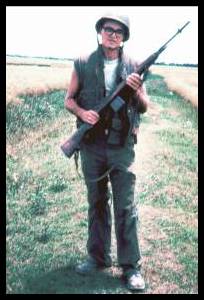
Recon squad foot patrol – 10 miles from any Americans
Later, again on a part time basis, I got volunteered to ride shot gun on Marine / Seabee resupply convoys. At this point MCB-7 was fully integrated into the 3rd Marine Div. Every thing we did was in support of the Marines. We were shipping construction supplies and other Seabee support material to our detached platoon in Đông Hà about 3 hours north of Phu Bai and 3 miles south from the DMZ. Since, the Seabees were part of the convoy we provided part of the security. I preferred to ride on the boom seat of the Marine wrecker truck, since I had a great field-of-fire from that position.

M-10 wrecker truck –web photo
Hwy 1 ran N-S almost the length of the country, by U.S. standards it was no highway. It usually was paved, but the pavement was only 12 feet wide. Below are some photos I took with my miniature camera along the route. I carried a Cannon metal camera in my fatigue pocket over my heart, telling myself that maybe someday it would deflect a bullet.
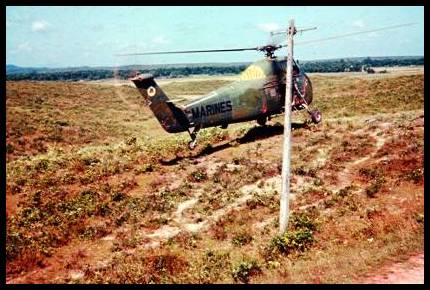
Our Marine air cover helo is landing to confer with the convoy commander. I did not learn until much later what killed the high and thick vegetation on both sides of the road. Agent Orange was sprayed to mitigate ambushes.
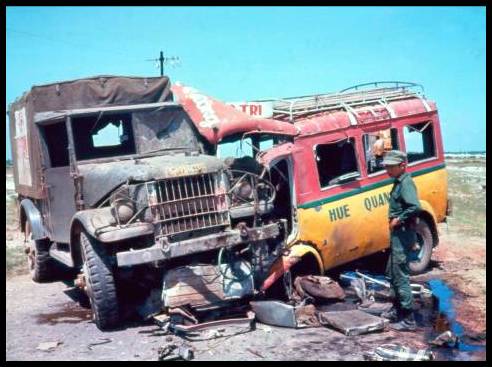
The ARVN ambulance was south bound on Hwy 1, when a civilian Hue / Quang Tri bus decided to pass it on our side of the road. The bus hit the mine intended for our convoy and blew it into the ambulance. All 14 on the bus died. Their grisly remains were picked up by the ambulance crew and then thrown in the back of the operable ambulance. I took this photo about 5 minutes after the explosion when my wrecker truck arrived to clear the road. The puddle at the lower right is a horrible mixture of blood and motor oil.
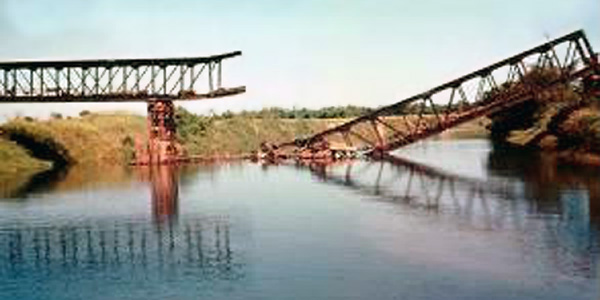
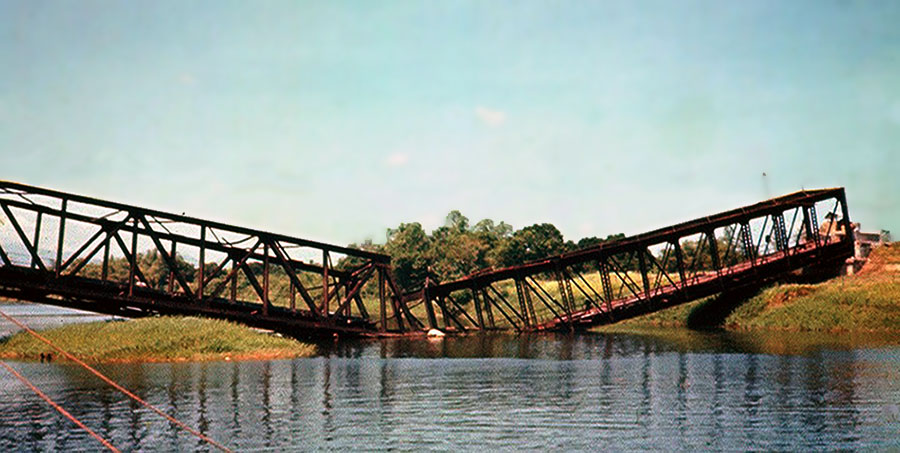
ARVN troops were assigned to protect the bridges. We all knew that was a joke. The NVA had blown these two bridges on Hwy 1 a few days before we got there. We crossed on the Marine erected pontoon bridges on the day they were finished.
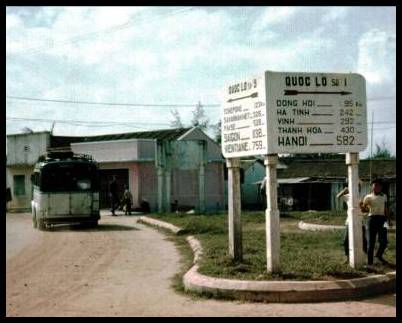
This photo was taken at the intersection of Hwy 9 & Hwy 1, about 5 miles south of the DMZ. As you can see on the sign, Hanoi is one half the distance to Saigon.
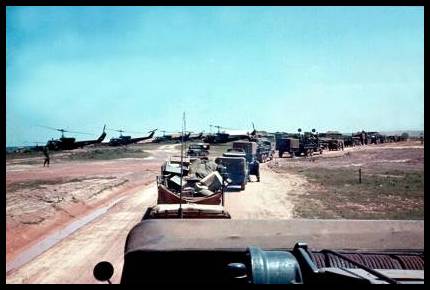
At last, we arrive safely at the Marine Combat Camp at Đông Hà, 3 miles south of the DMZ
About this time, I decided that I liked riding shotgun despite the dangers and began volunteering myself, instead of getting volunteered by the gunny. Also, in the same time frame, the NVA blew all the pontoon bridges several times. Then the Marines decided to give up truck convoys in favor of landing craft convoys. These river/sea going convoys still needed shotgun riders. The resupply convoys would sail along the South China Sea then up or down the rivers to their destination.
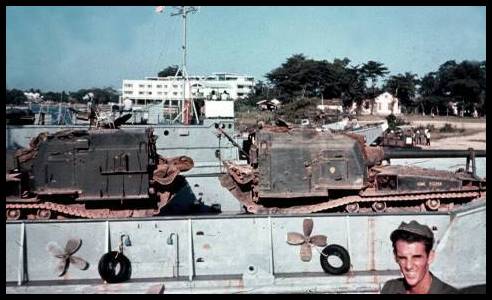
The landing craft ramp at the ultramodern University of Hue. This campus was built with U.S. funds before the war and was shut at this time because of the war. 155mm self-propelled Marine cannon are chained down in the landing craft for shipment to Đông Hà. EA-3 Peter Killeen in the foreground riding shotgun.
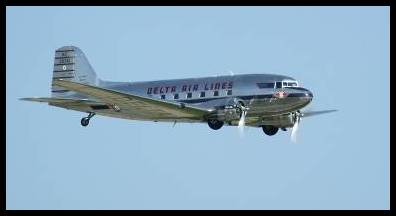
A few times I had courier missions North to Đông Hà or south to Đà Nẵng on C-47’s (Gooney Birds), or CH-47 (Chinooks) helicopters.
C-47/ Gooney Bird – web photo
On my first trip to Đà Nẵng on Air America (run by our CIA) C-47, I had some excitement. After the pigs, chickens and farmers got off the plane, then I got on. I waited for the crew to close the passenger door. Well, I could have waited forever because there was no door. After take off, I noticed the twin engines were not synchronized and were vibrating terribly. A short while later, both engines started burning very thick black oily smoke which covered the fuselage. I wondered with all this going on, how were we going to get over the 4,000 foot high mountain range in front of us? I soon found out. We couldn’t fly over the mountains with so little power. We twisted through the valleys instead. WHEW!!
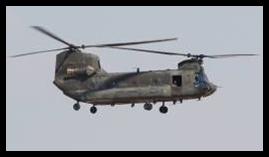
CH-47/ Chinook- web photo
On my first trip north to DongHa on a Marine Chinook helo, I had some excitement. As soon as I sat down I noticed there was no “glass” in the window openings. I asked the crew chief to explain. He said “we have no machine guns on this aircraft. If we catch ground fire, as we almost always do, stick your rifles out the window openings and fire back.” It was then I noticed the fuselage had about a hundred bullet holes and half of them were patched. Thank God I did not catch any fire that day or any day on a CH-47. WHEW!!
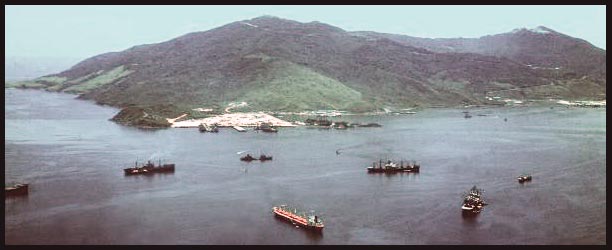
Deep water docks built by Seabees at Đà Nẵng harbor 1966
Looking south toward Monkey Mountain.
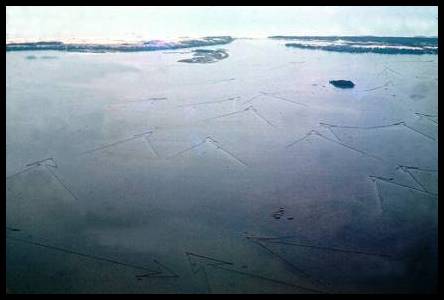
Strange looking fish traps near South China Sea in Quang Tri Province.
I never fired my rifle at the enemy on any of my missions. They were all in the daytime and I was lucky. At night on MCB-7’s perimeter is a completely different story.
Ray Cochran EA
![]()
![]()